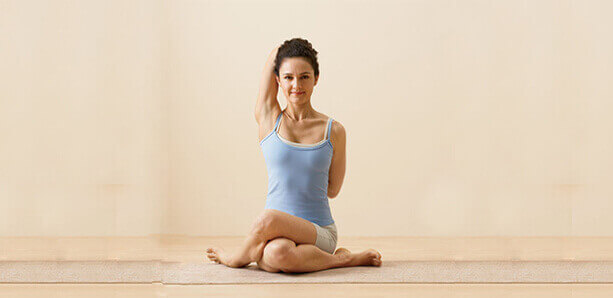Yoga clears Irritable Bowel Syndrome

Afflicting upto 20 percent of adults, Irritable bowel syndrome is often characterised by abnormal muscle contractions in the intestines, resulting in too little or too much fluid in the bowel. It is common for stress to exacerbate irritable bowel syndrome symptoms, so it is important to make an effort to develop effective relaxation techniques, such as meditation and yoga. A psychotherapist or a counsellor can help you identify the stressors in your life and develop better methods of managing them. Exercise can be very therapeutic for people with IBS because it helps reduce stress; it can also normalize bowel function if constipation is a problem.
Irritable Bowel Syndrome (IBS) is a psychophysical disorder that results in abdominal pain or discomfort, bloating, and abnormal bowel movements including constipation and diarrhoea. It is classified as a major gastrointestinal tract disorder; it can happen at any age and can be more commonly found in women than men. Studies suggest that Irritable Bowel Syndrome can reduce the quality of life and even lead to emotional stress.
1. Marjariasana – Cat pose

- The Cat pose tones the abdomen and improves digestion. It helps in overcoming the emotional stress Irritable Bowel Syndrome brings in by relaxing the mind. Kneel on the floor and lean forward putting both your palms on the floor pointing forward.
- The legs can be slightly apart and palms should be at shoulder length.
- Take the position similar to a standing cat. Let your trunk be parallel to the ground, the thighs should be vertical and straight. The lower leg and feet should be on the floor.
- This is the base position. Relax your body completely. Make sure your shoulder and back muscles are relaxed.
- Now exhale completely and feel your belly go inwards. At the same time move your head inwards between your shoulders. While doing this your back will bend and arch upwards.
- Now inhale and arch your back in the opposite direction. The spine will bend slightly downwards. The head, neck and shoulders should be arched backwards, as if you are looking up.
- Repeat this process, as many times as you are comfortable. Do this asana with slow and deep breathing and feel the stretch it gives to your back, neck and shoulders. Feel the stiffness disappear and the sense of greater flexibility in your back muscles and spine.
2. Pawanamuktasana – wind relieving pose

The Wind-relieving pose massages the intestine and other abdominal organs thus helping in releasing excess gas from the body. Lie flat on your back and keep the legs straight and relax breath deeply and rhythmically. Inhale slowly and lift the legs and bend in the knee. Bring upwards to the chest till your thigh touches to stomach. Hug your knees in place and lock your fingers. Try to touch the knee with your nose tip. This is not easy in first time. But regular practice you can do this. Hold this position for 20 to 30 seconds. You can extend it till 1 minute as per your capability. Now exhale slowly and come back to the original position. This is very beneficial for stomach abs. The results are very impressive. Practice 3 to 5 cycles each day.
3. Downward- facing dog pose

The Downward-facing Dog pose lengthens the spine and tones the abdominal muscles. This yoga posture also rejuvenates the body by improving blood circulation. Come onto your fours. Form a table such that your back forms the table top and your hands and feet form the legs of the table. As you breath out lift the hips up straightening the knees and elbows, form an inverted V-shape with the body. Hands are shoulder width apart, feet are hip width apart and parallel to each other. Toes point straight ahead. Press your hands into the ground. Widen through the shoulder blades. Keep the neck lengthened by touching the ears to the inner arms. Hold the downward dog pose and take long deep breaths. Look towards the navel. Exhale. Bend the knees, return to table pose. Relax.
4. Vajrasana

Kneel down , stretching your lower legs backward and keeping them together. Your big toes should cross each other. Gently lower your body such that your buttocks are resting on your heels and your thighs on your calf muscles. Place your hands on your knees, and set your gaze forward with your head absolutely straight. Turn your attention to your breathing. Be fully aware of how you breathe and carefully observe as you inhale and exhale. You could close your eyes to concentrate on your breathing and to calm your mind. Try to stay in this position for a minimum of 5 to 10 minutes. This asana enhances blood circulation in the lower abdomen improving digestion. If you sit in Vajrasana after food, food gets digested well. It relieves excessive gas trouble or pain. Nerves of legs and thighs are strengthened. Makes knee and ankle joints flexible and prevents certain rheumatic diseases. In Vajrasana , the spine is erect without much effort. It is also beneficial for practice of pranayam and as a preparatory for meditation.

